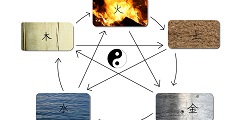About Traditional Chinese Medicine
The Traditional Chinese Medicine (TCM) existed in its present form only since about 50 years. But the origins of TCM go much further back: More than 3000 years ago already acupuncture (needle technique) and moxibustion (heat application) were used. These healing methods developed from the Chinese folk medicine that was still permeated by spirits and demons. There is evidence that acupuncture was not limited to China. So let investigations on glacier man "Ötzi" suspect that he allowed himself to treat 5,000 years ago with an early form of acupuncture. Written sources for TCM have been known for over 2000 years. The oldest of the writings is the Huangdi Neijing - in English: "The Medical Classic of the Yellow Emperor". This extensive work is the basis of all other texts about TCM. The holistic approach of the old texts teaches us that man is part of a natural order: if someone lives in harmony with nature and fellow human beings, he will stay healthy.
The Basics of TCM
The holistic view of TCM in health and disease is markedly different from Western medicine: Where Western medicine looks for changes of organs and their functions, the TCM looks for disturbances of the energy flow in the body. Depending on the disease both views have their advantages and disadvantages. Some chronic diseases or ailments without clear dysfunction of an organ can be treated with western medicine only inadequately. As a useful complement to Western medicine, the TCM cares about the harmony of body and soul.
Concepts of TCM
In TCM the human being is suspended between heaven and earth - between yin and yang. The living man is traversed by a flow of energy that the Chinese call Qi (vital energy). Any disturbance of qi leads to diseases. Based on these fundamentals as well as centuries of observation the five phases arose (metal, wood, water, fire and earth), to which organ systems - the functional circuits - were assigned. The following selection provides more information about the individual concepts.





